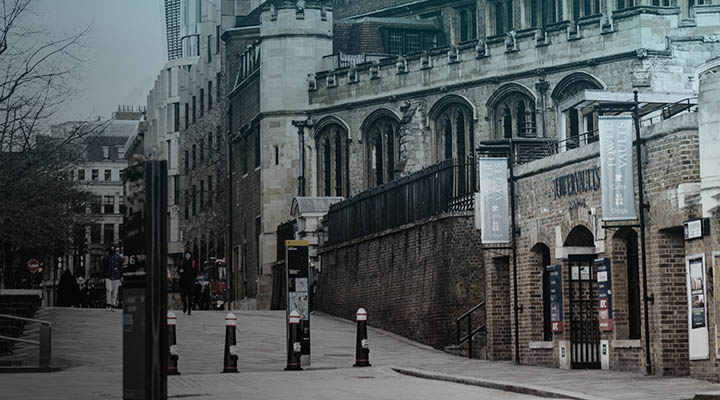Britain is a nation of shopkeepers and at the best of times we love to discuss the state of the Great British high street. But now, more than ever before, it seems we are using our retailers as a benchmark to track how we have responded to the pandemic, the shift in our behaviour and what this means for the economy and our recovery.
Like most people, my LinkedIn and news feed are awash with some concerning stories about the state of the industry and how this might, or might not, recover over the coming weeks, months and years. I took a bit of time this week to step away from the screen and reflect on three of the biggest changes I’ve noticed this week as a consumer.
The deserted high street
Like many people, I used to be in London multiple times a week and loved nothing more than visiting some of my favourite shops after work, but this week saw my first visit since March. Now I’ve seen the images of a deserted city centre and understand the struggle that retailers are facing. However, nothing quite prepared me for seeing an empty Regent Street on a Saturday afternoon, with more boarded-up shops that I would like to count.
We can all reel off a list of retailers that are struggling right now and, more often than not, the reasons are all too obvious to shoppers. But when we consider the turnaround plans of some of the biggest names on the high street, it all feels a little flat to me.
John Lewis has recently unveiled its new strategy, whilst acknowledging that 60-70% of sales will move online, they are focusing on expanding their financial services business and becoming an affordable landlord. For me, this fails to address some of the core problems in their business, namely an expensive and outdated store estate and an underwhelming online experience.
M&S recently shared that their turnaround programme for their clothing and home business is 18 months behind schedule. Whilst the strategy to obtain a third of sales online remains the same, poor planning and weaknesses in the supply chain has cost them dearly. All this whilst Debenham’s fate hangs in the balance once again.
These huge names used to be the cornerstone of our high street, but it seems they have lost their way. They appear to have forgotten their customer base and the art of innovation, which means they are no longer exciting and relevant.
Tis the season to discount
Whilst killing a bit of time on Instagram this week, one post made me pause - an advert for Black Friday. This officially signals the start of the discount season and the final hope of many retailers of making the margin they desperately need to survive. Argos, Currys PC World and Amazon have already kicked off proceedings this year.
Whilst consumers are likely to welcome a cheap deal and free returns, we have to ask ourselves as an industry how much longer the trend of generic and one-size-fits-all discounting can continue. These discounts don’t drive loyalty, build brand value or profit, yet the vast majority of retailers feel compelled to participate.
Instead of a one-size-fits-all approach, retailers should be making the most of the huge amount of data they have access to and tailoring their offers to drive the most desirable outcome from their customers.
Retailers could take inspiration from beauty companies that take a more advanced approach to personalisation to drive loyalty. Japanese skincare brand Shiseido, own Optune, an innovative IoT skincare system that uses an app to understand a customer’s unique requirements and provide a highly personalised product to achieve the desired results. The subscription-based service is said to drive loyalty and reduce marketing spend, two big wins for any beauty brand. Look Fantastic is another example of a retailer that uses the vast amount of data it collects to send highly personalised and relevant emails and discounts to its customers.
A new type of luxury
Moving to the other end of the spectrum, I’ve never been averse to a bit of luxury and treating myself on a special occasion. But over the last nine months, this has been a long way from my mind. Even when I’ve been tempted by a new season’s launch browsing Instagram, a look book or website seems a long way from the in-store experience that so easily gets me parting from my hard-earned cash.
For so many years, luxury retailers have shied away from online as the question of how to recreate the theatre, ceremony and experiential approach has been too big a challenge. This year we’ve seen an industry that has been forced to move into this century, even if it’s a reluctant move for some.
We’ve seen Moncler, a brand that has traditionally outsourced its digital operations, release plans to bring these in-house and grow e-commerce sales to 20% of its business by 2023. Whilst Sergio Ross has launched its own ‘TV’, helping its store associates to continue to sell their luxury products from a distance and with as much of the crucial human touch as possible.
Fashion Weeks around the globe are also something that have seen minimal changes over the last few decades, but Covid-19 has forced the change and a hybrid fashion week has appeared. London Fashion Week in September saw just a handful of designers host small, socially-distanced shows with the vast majority being streamed online and available to the public to browse and shop.
Whilst it’s exciting to see the changes taking place within the largely traditional luxury market, it will be even more interesting to see whether this fundamentally changes the shape of the industry as life all becomes a bit more normal.
To sum up the month
It’s not a surprise that the retailers that fail to innovate often hit trouble when times get difficult. I hope that this seismic shock to the industry makes retailers across the world sit up and pay attention, this is the time for change and innovation, let’s leave the status quo in the pre-Covid world.
Published
April 29, 2024Reading time
3 minutesRelated posts





